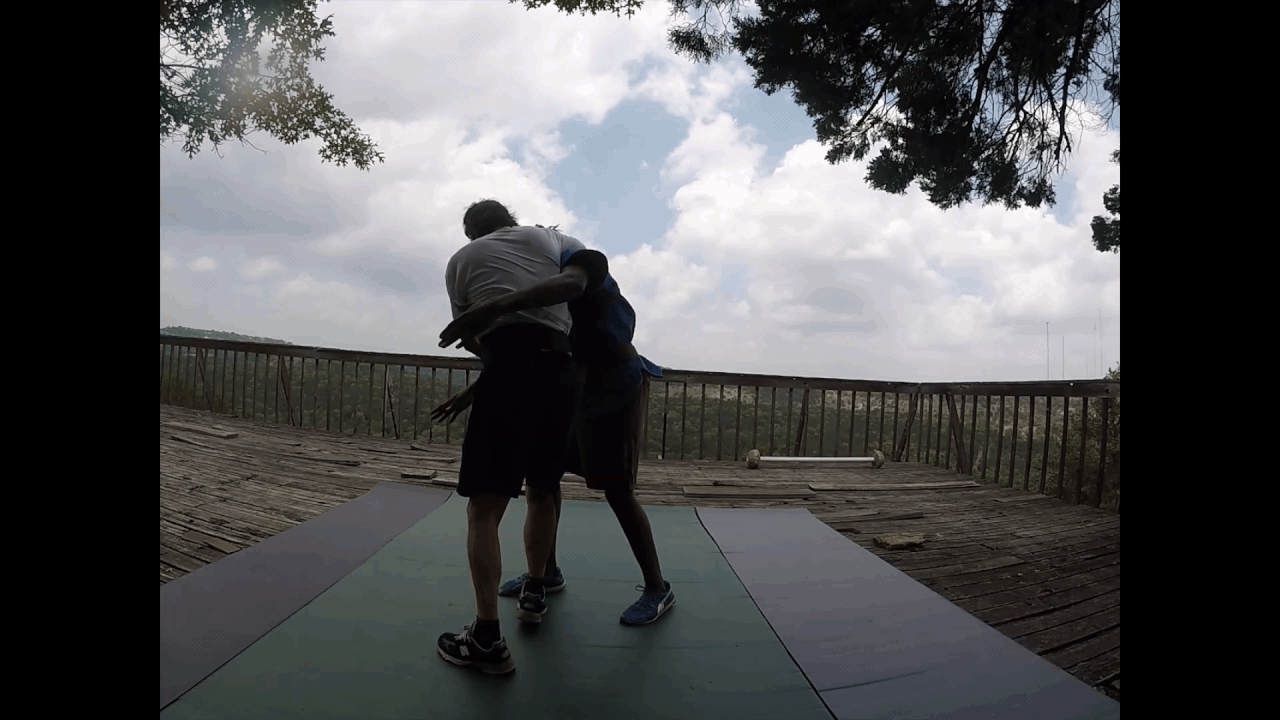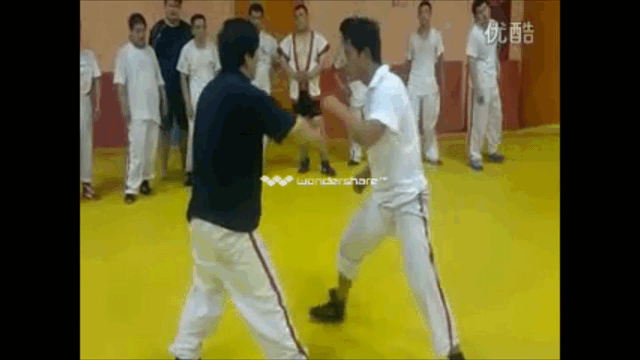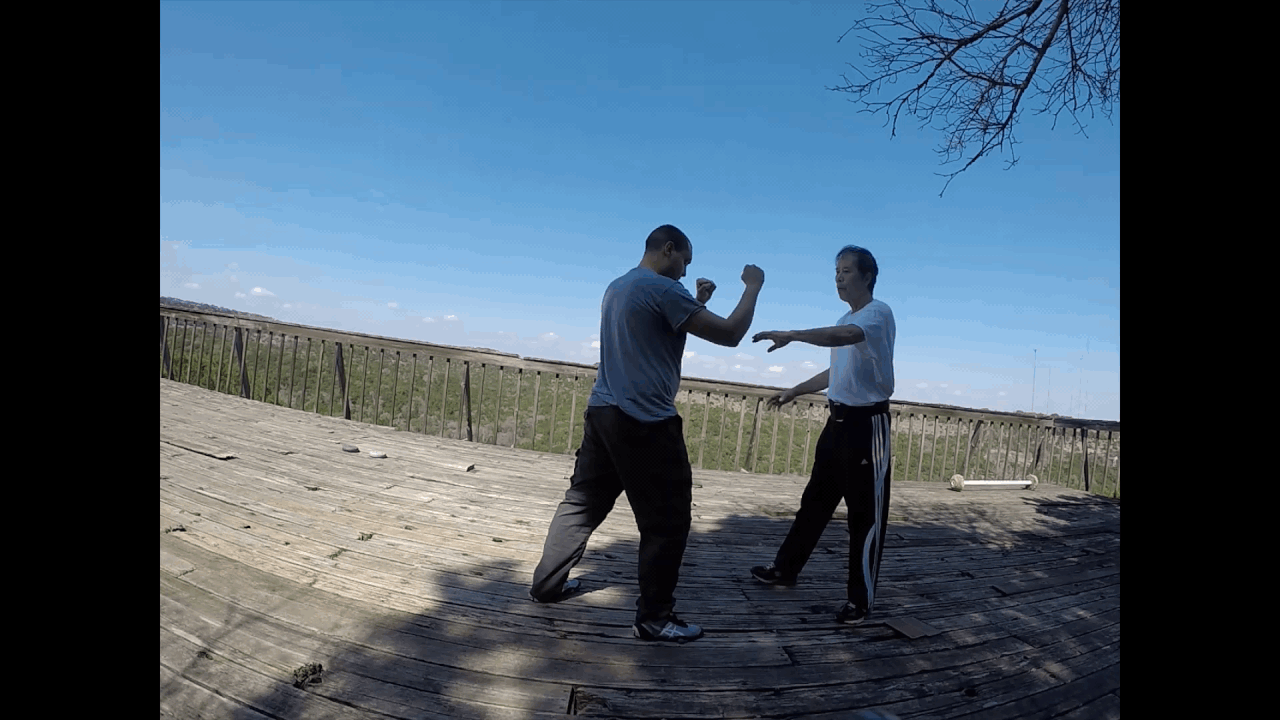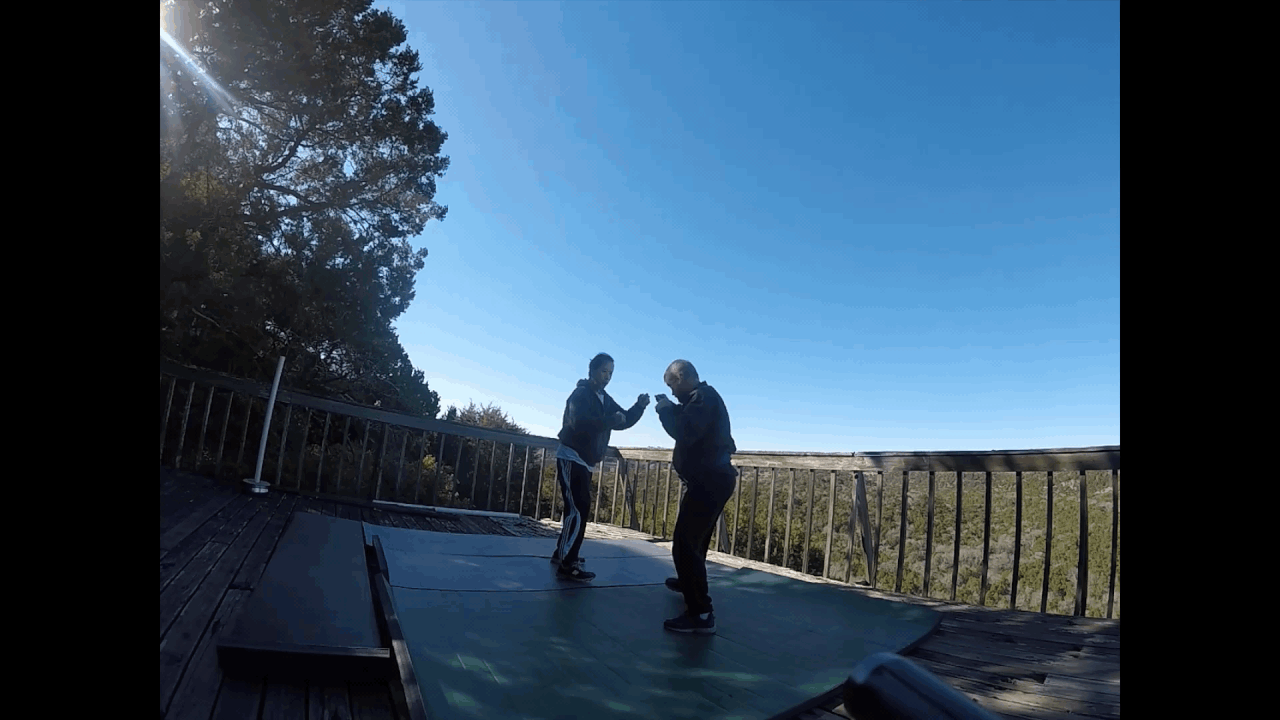I thought this might be fun for the Wing Chun and FMA practitioners. I’m a big fan of Greg Nelson’s approach to fighting, so this was right up my alley
Navigation
Install the app
How to install the app on iOS
Follow along with the video below to see how to install our site as a web app on your home screen.
Note: This feature may not be available in some browsers.
More options
You are using an out of date browser. It may not display this or other websites correctly.
You should upgrade or use an alternative browser.
You should upgrade or use an alternative browser.
Trapping in MMA
- Thread starter Tony Dismukes
- Start date
Can anyone spot Kung Fu stylists using trapping in a fight?
I thought this might be fun for the Wing Chun and FMA practitioners. I’m a big fan of Greg Nelson’s approach to fighting, so this was right up my alley
Zhang Weili: “If you want traditional CMAists to go fight in today’s MMA and combat events, they will most likely not be successful and lose. On the other hand, if some MMA fighters studied some essential aspects of traditional CMAs like its method of issuing force. Its footwork. I think it will be very beneficial and implementing it, finding ways to combine these traditional methods in combat sport. This is good. One cannot say these practices are not good. That’s inaccurate. Its ideology is not the same as MMA. Each style of CMA has its own ideology as to how it advances, attacks, etc., although often these concepts aren’t implemented. And many people simply practice a form of exercise. I mean take for example Tony Ferguson and Anderson Silva. They have utilized Wing Chun methods in the cage in MMA. Their use of fast elbows connected extremely fast. Also, their kicks are like Wing Chun kicks too and they come out suddenly. So, they [MMAists] have taken the essence from CMA styles and combined it in MMA. They didn’t say: This is the best. I’m not interested in anything else. I think this mentality is incorrect.”Excerpt from the posted Zhang Weili video at 13:11...
Byron: I agree fully…In the past, China used to have many leitai matches. Many CMA stylists used to participate…
Why do you think Wing Chun or CMA stylists are not found using trapping (e.g., lap sau [grabbing hand]) in fights? While, fighters in combat sports are seen using simple trapping,
Ultimately, what this comes down to is that a lot of CMA don't train against pressure. But if they did, they bring a unique element that would do well even in modern mmaCan anyone spot Kung Fu stylists using trapping in a fight?
Zhang Weili: “If you want traditional CMAists to go fight in today’s MMA and combat events, they will most likely not be successful and lose. On the other hand, if some MMA fighters studied some essential aspects of traditional CMAs like its method of issuing force. Its footwork. I think it will be very beneficial and implementing it, finding ways to combine these traditional methods in combat sport. This is good. One cannot say these practices are not good. That’s inaccurate. Its ideology is not the same as MMA. Each style of CMA has its own ideology as to how it advances, attacks, etc., although often these concepts aren’t implemented. And many people simply practice a form of exercise. I mean take for example Tony Ferguson and Anderson Silva. They have utilized Wing Chun methods in the cage in MMA. Their use of fast elbows connected extremely fast. Also, their kicks are like Wing Chun kicks too and they come out suddenly. So, they [MMAists] have taken the essence from CMA styles and combined it in MMA. They didn’t say: This is the best. I’m not interested in anything else. I think this mentality is incorrect.”
Byron: I agree fully…In the past, China used to have many leitai matches. Many CMA stylists used to participate…
- Joined
- Aug 3, 2015
- Messages
- 14,670
- Reaction score
- 6,334
I was just about to post something like this. Trained with my new sparring partner who is doing some wing chun. He was working his wing chun as we were doing some clinch work (defense, offense, and arm control). I walked away from that training stating that there was more grappling in wing chun than what we see when Wing Chun spars.
I thought this might be fun for the Wing Chun and FMA practitioners. I’m a big fan of Greg Nelson’s approach to fighting, so this was right up my alley
We went for about an hour just attacking and defending going for arm drags. It all started with him trying out a Jow Ga form and we got into the short-range techniques of Jow Ga and it led us into some tai chi grappling. I could have gone another 3 hours just doing that, but my wife pulled me away lol.
I have always said that I don't like Wing Chun. Last night changed all of that. I now have a new perspective about wing chun so now I can get rid of some of the old visual memories of bad wing chun.
And just to add to this. I'm pulling out my soapbox. Lots of today's CMA also don't do System A vs System B sparring. So, whenever they meet someone outside of their system, they are totally lost and unfamiliar with the types of attacks and strategies that are thrown at them.Ultimately, what this comes down to is that a lot of CMA don't train against pressure. But if they did, they bring a unique element that would do well even in modern mma
Many TMA skills have not been used in MMA yet. When my SC teacher was still alive, one day he said, "If anybody know how to do 'tie', I'll pay him $10,000".“If you want traditional CMAists to go fight in today’s MMA and combat events, they will most likely not be successful and lose.
When your opponent wraps your waist and tries to pull you down backward, you can use "tie" with
- over hook,
- leg spring,
- shin bite,
to counter. It's the best counter against waist pulling. The key point is the MMA guys has to learned this from the TMA in the first place. This technique was considered as "secret" even in TMA 30 years ago.
I believe over hook is used in MMA. Whether leg spring and shin bite are also used in MMA or not, at least I have not seen it yet.



Last edited:
- Joined
- Aug 3, 2015
- Messages
- 14,670
- Reaction score
- 6,334
lol You and Tony must have cameras planted in my gym. I was showring something similar last night because Jow ga has part of this in beginner form. I was walking through the applications of the form. I was showing him the entry part of moving into bow stance to disrupt the stance. I thought he had a solid stance but I caught him off guard and it popped his leg back with more force than I was expecting.Many TMA skills have not been used in MMA yet. When my SC teacher was still alive, one day he said, "If anybody know how to do 'tie', I'll pay him $10,000".
When your opponent wraps your waist and tries to pull you down backward, you can use "tie" with
- over hook,
- leg spring,
- shin bite,
to counter. It's the best counter against waist pulling. The key point is the MMA guys has to learned this from the TMA in the first place. This technique was considered as "secret" even in TMA 30 years ago.
I believe over hook is used in MMA. Whether leg spring and shin bite are also used in MMA or not, at least I have not seen it yet.

Well, self defense is much different than a fighting competition. Fighting competitions don’t usually start out with a push or a grab. Self defense starts out mostly as a passive step back, hands up but open and a “hey, let’s not do this”. Trapping works well against overly aggressive but unsuspecting dumb dumbs.
- Joined
- Aug 3, 2015
- Messages
- 14,670
- Reaction score
- 6,334
you don't think you can use trapping in a street fight?Well, self defense is much different than a fighting competition. Fighting competitions don’t usually start out with a push or a grab. Self defense starts out mostly as a passive step back, hands up but open and a “hey, let’s not do this”. Trapping works well against overly aggressive but unsuspecting dumb dumbs.
Last edited:
- Thread Starter
- #10
Many TMA skills have not been used in MMA yet. When my SC teacher was still alive, one day he said, "If anybody know how to do 'tie', I'll pay him $10,000".
When your opponent wraps your waist and tries to pull you down backward, you can use "tie" with
- over hook,
- leg spring,
- shin bite,
to counter. It's the best counter against waist pulling. The key point is the MMA guys has to learned this from the TMA in the first place. This technique was considered as "secret" even in TMA 30 years ago.
I believe over hook is used in MMA. Whether leg spring and shin bite are also used in MMA or not, at least I have not seen it yet.

I use both of those in MMA sparring. The reason you might not have noticed them in MMA is that they’re usually quick transitional movements used to provoke a reaction or briefly upset an opponent’s structure. You won’t usually be able to compromise someone’s structure so completely as shown in your last clip if they are competent and competitively close to your own skill level.
Why leg spring is a must have skill? When your opponent is behind you and tries to pull you down, if you spring his leg and make him to stay in bow-arrow stance, he can't pull you down. At the same time, you can take advantage on his weight distribution and use shin bite or knee seize to take him down.That's the same reaction that his body made when I applied it to him.
Sure. I think there is a time for all good techniques. It’s just a lot easier to pull off techniques against the unsuspecting buffoon.you don't think you can use trapping in a street fight?
Taiji Rebel
Black Belt
- Joined
- May 18, 2023
- Messages
- 653
- Reaction score
- 342
Trapping is based on sensitivity drills. The aim of practicing those drills is to flow with an opponent's energy and intention in a natural manner. The video Tony shared above gives you plenty of insight into how these concepts can be used during the flow of a fight. It all depends on the situation in which you find yourself. A street fight is a whole lot more stressful than an organised match in MMA though.Sure. I think there is a time for all good techniques. It’s just a lot easier to pull off techniques against the unsuspecting buffoon.
I’m a big fan of his approach, too.
I thought this might be fun for the Wing Chun and FMA practitioners. I’m a big fan of Greg Nelson’s approach to fighting, so this was right up my alley
What we used to do was teach the basics and work them a long while, then once you got to a comfortable, intermediate level, you worked them without really paying attention.
What I mean is, you would carry on conversations with your partner that had nothing to do with trapping, fighting or anything related to training. We found that it helped in making trapping more instinctive.
We would do the same thing with blocking drills. After several years of both I got punched in the face far fewer times.
The man that taught me trapping drills was a JKD instructor who was legally blind. He pretty much had to do things by touch. It was like doing trapping drills with a man who had three arms. Learned a lot, though.
But if you let your opponent's arms to move freely, that will be your fault. why don't you just grab your opponent's wrists and start from there?Trapping is based on sensitivity drills. The aim of practicing those drills is to flow with an opponent's energy and intention in a natural manner.
In other words, you don't want to just sense your opponent's arms intention. You want to guide your opponent's arms to where you want it to be. Is that a better goal for you?
If you can tuck one of your opponent's arms under his other arm, you will have great advantage.
To guide your opponent's arm away from your entering path is always better than to let his arms to move freely.

Last edited:
Taiji Rebel
Black Belt
- Joined
- May 18, 2023
- Messages
- 653
- Reaction score
- 342
Anything can work in the right circumstances.But if you let your opponent's arms to move freely, that will be your fault. why don't you just grab your opponent's wrists and start from there?
In other words, you don't want to just sense your opponent's arms intention. You want to guide your opponent's arms to where you want it to be. Is that a better goal for you?
If you can tuck one of your opponent's arms under his other arm, you will have great advantage.
To guide your opponent's arm away from your entering path is always better than to let his arms to move freely.

Our Aikido instructor used to describe it as adding more tools to your toolkit.
Some tools are used more often than others and the real trick is selecting the correct fit for the job. This is where sensitivity training, trapping drills, randori and sparring come into effect.
The more often you play with an opponents energy the easier it becomes to unconsciously choose the correct technique for the job... you can also see these tactics in boxing, Roberto Duran being one such example
Last edited:
Similar threads
- Replies
- 42
- Views
- 4K
T
- Replies
- 8
- Views
- 7K
Latest Discussions
-
The essence of Tai Chi push hand kung fu
- Latest: windwalker099
-
-
-
-


